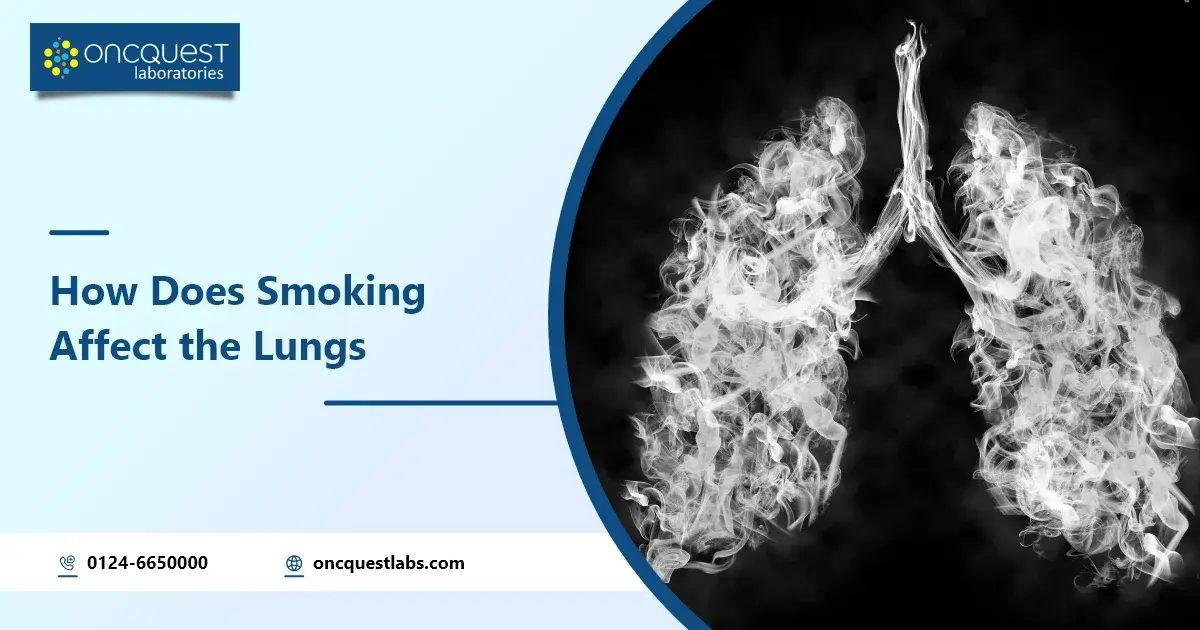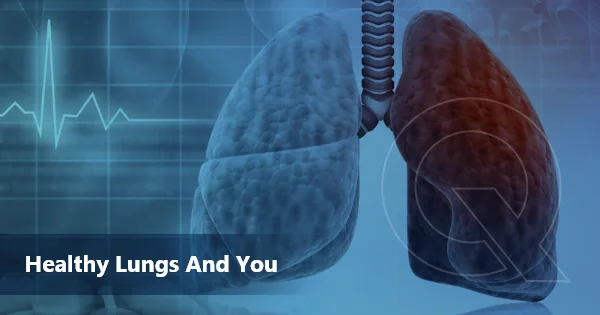Welcome to a crucial exploration of the impact of smoking on one of our body’s vital organs – the lungs. As we delve into this topic, it becomes evident that the habit of smoking goes beyond just a momentary act; it leaves a lasting imprint on the intricate respiratory system. Join us in uncovering the intricate relationship between smoking and lung health, understanding the mechanisms at play, and gaining insights into the profound consequences that tobacco inhalation can have on these essential organs. It’s time to illuminate the path towards informed choices and better respiratory well-being.
Contents
Anatomy of the Lungs
The lungs, integral to the respiratory system, are remarkable organs that facilitate the exchange of oxygen and carbon dioxide, crucial for sustaining life. Understanding their anatomy provides insight into the intricacies of this vital process.
1. Location:
– The lungs are paired organs situated within the thoracic cavity, flanking the heart.
– Enclosed by the rib cage, they are protected and separated by the mediastinum.
2. Structure:
– Divided into lobes, with the right lung consisting of three lobes and the left lung two.
– Each lobe is further subdivided into smaller units called lobules.
3. Bronchial Tree:
– The trachea bifurcates into the main bronchi, which further divide into bronchioles.
– Bronchioles terminate in clusters of air sacs known as alveoli.
4. Alveoli:
– Microscopic air sacs where gas exchange occurs.
– Surrounded by a network of capillaries, facilitating the exchange of oxygen and carbon dioxide with the bloodstream.
5. Pleura:
– Double-layered membrane enveloping the lungs.
– The visceral pleura adheres to the lung surface, while the parietal pleura lines the chest cavity.
6. Diaphragm:
– A crucial muscle separating the thoracic and abdominal cavities.
– Contraction and relaxation of the diaphragm play a key role in the breathing process.
Understanding the detailed anatomy of the lungs lays the foundation for comprehending the impact of smoking on these complex and delicate structures. As we explore the consequences of smoking, it becomes apparent how these intricate components are susceptible to harm, influencing respiratory function and overall health.
Smoking and Lung Health
The relationship between smoking and lung health is a complex interplay that involves exposure to a multitude of harmful substances found in tobacco smoke. As we unravel the connection, it’s essential to delve into the chemical composition of tobacco smoke and the immediate effects of inhalation on the respiratory system.
1. Chemical Composition:
– Tobacco smoke contains over 7,000 chemicals, with hundreds identified as harmful, and at least 69 known to cause cancer.
– Key culprits include nicotine, tar, carbon monoxide, and various carcinogens.
2. Inhalation Process:
– When a person smokes, they inhale these harmful substances into their lungs.
– The rapid absorption of nicotine occurs, leading to addiction and influencing the repetitive nature of smoking.
3. Immediate Effects on the Respiratory System:
– Irritation and Inflammation: Smoke irritates the airways, leading to immediate inflammation and constriction of bronchial tubes.
– Increased Mucus Production: The respiratory system responds by producing excess mucus, impairing the ability to clear the airways efficiently.
– Coughing: A common response to the irritation and increased mucus production.
Understanding these immediate effects is crucial in recognizing the strain smoking places on the respiratory system. As we explore further, we’ll uncover the short-term and long-term consequences of this habit, providing a comprehensive view of how smoking detrimental impacts lung health over time.
Short-Term Effects of Smoking on the Lungs
The short-term effects of smoking on the lungs manifest rapidly, offering a glimpse into the immediate consequences of inhaling tobacco smoke. These effects underscore the initial strain imposed on the respiratory system, providing insight into the toll smoking takes on lung health.
1. Coughing and Irritation:
– Within hours of smoking, the airways become irritated, triggering coughing as the body attempts to expel irritants.
– Persistent coughing is a common short-term consequence, accompanied by throat irritation.
2. Reduced Lung Capacity:
– Smoking hampers the ability of the lungs to expand and contract efficiently.
– Reduced lung capacity becomes evident, impacting breathing and overall respiratory function.
3. Increased Mucus Production:
– Tobacco smoke stimulates the production of excess mucus in the respiratory tract.
– This increase in mucus can lead to a feeling of congestion and further contribute to coughing.
While these effects may seem immediate and reversible, they serve as warning signs of the stress imposed on the lungs by smoking. As we delve into the long-term consequences, a clearer picture emerges of how these short-term impacts contribute to more profound and lasting damage to respiratory health.
Long-Term Consequences
The long-term consequences of smoking on the lungs paint a sobering picture of the enduring damage inflicted by sustained exposure to tobacco smoke. These consequences go beyond the initial irritations and extend into serious, chronic conditions that significantly compromise respiratory function and overall health.
1. Chronic Obstructive Pulmonary Disease (COPD):
– COPD is a progressive lung disease encompassing chronic bronchitis and emphysema.
– Prolonged smoking leads to the gradual narrowing of airways and destruction of lung tissue, resulting in persistent breathing difficulties.
2. Lung Cancer:
– Smoking is the primary cause of lung cancer, responsible for a substantial majority of cases.
– Carcinogens in tobacco smoke initiate genetic mutations in lung cells, leading to the uncontrolled growth of cancerous cells.
3. Emphysema and Chronic Bronchitis:
– Emphysema involves the gradual destruction of the alveoli, reducing the lungs’ ability to exchange oxygen and carbon dioxide.
– Chronic bronchitis is characterized by persistent inflammation and excessive mucus production, contributing to long-term breathing problems.
These long-term consequences underscore the severity of the impact of smoking on lung health. They emphasize the importance of recognizing the cumulative nature of damage caused by tobacco smoke and highlight the significance of smoking cessation in mitigating further harm and promoting better respiratory well-being.
Mechanisms of Damage
The mechanisms of damage inflicted by smoking on the lungs delve into the intricate processes that lead to long-term consequences. Understanding these mechanisms provides insight into how tobacco smoke, with its complex mixture of harmful substances, instigates structural and functional alterations within the respiratory system.
1. Inflammation and Oxidative Stress:
– Tobacco smoke triggers inflammation in the airways, leading to chronic irritation and damage.
– Oxidative stress occurs as free radicals in smoke overwhelm the body’s antioxidant defenses, contributing to cellular damage.
2. Impact on Cilia and Mucociliary Clearance:
– The respiratory tract is lined with cilia—hair-like structures that move in coordinated waves to sweep mucus and trapped particles out of the airways.
– Smoking impairs ciliary function and disrupts mucociliary clearance, reducing the lungs’ ability to effectively remove harmful substances.
3. Disruption of Lung Tissue Architecture:
– Chronic exposure to tobacco smoke leads to the breakdown of elastin and collagen fibers in lung tissue.
– This structural damage contributes to the development of conditions like emphysema, where the air sacs lose their elasticity and structural integrity.
Understanding these mechanisms emphasizes the multifaceted nature of smoking-induced lung damage. As we navigate the intricate pathways through which smoke exerts its harmful effects, it becomes evident why sustained smoking poses such a significant risk to respiratory health and underscores the importance of prevention and smoking cessation efforts.
Smoking Cessation and Lung Recovery
Smoking cessation marks a pivotal point in the trajectory of lung health, initiating a process of recovery that can lead to significant improvements in respiratory function and overall well-being. The decision to quit smoking is a crucial step towards giving the lungs an opportunity to heal and regain their natural capacity.
1. Benefits of Quitting Smoking:
– Immediate Improvements: Within hours of quitting, blood carbon monoxide levels decrease, allowing oxygen levels to return to normal.
– Reduced Respiratory Irritation: Coughing and shortness of breath often diminish within weeks.
– Long-Term Health Gains: The risk of developing smoking-related diseases, such as lung cancer and COPD, decreases over time.
2. Timeline for Lung Health Improvement:
– First Few Days to Weeks: Improved breathing and increased energy levels as oxygen circulation improves.
– Months to Years: Gradual reduction in the risk of lung infections and a significant decrease in the likelihood of developing severe respiratory conditions.
Quitting smoking is a dynamic process that leads to positive changes in lung health at various intervals. While the extent of recovery depends on factors such as the duration and intensity of smoking, the resilience of the lungs to heal is remarkable. This journey towards lung recovery underscores the transformative power of choosing a smoke-free life and emphasizes the lasting benefits that come with breaking free from the grip of tobacco addiction.
Prevention and Awareness
Prevention and awareness play pivotal roles in addressing the profound impact of smoking on lung health. Educating individuals about the dangers of smoking and fostering a culture of prevention are essential components of a comprehensive strategy to mitigate the widespread health risks associated with tobacco use.
1. Importance of Anti-Smoking Campaigns:
– Public Awareness: Robust campaigns highlighting the health risks of smoking raise awareness and discourage tobacco use.
– Graphic Warnings: Utilizing impactful visuals on cigarette packaging reinforces the severity of health consequences.
2. Education on the Dangers of Smoking:
– School Programs: Integrating anti-smoking education into school curricula empowers young individuals with knowledge about the risks and consequences of tobacco use.
– Community Initiatives: Local programs and community outreach efforts contribute to building awareness and promoting a smoke-free lifestyle.
3. Support for Smoking Cessation:
– Accessible Resources: Making smoking cessation resources readily available, such as hotlines, counseling services, and nicotine replacement therapies, facilitates individuals in their journey to quit.
– Policy Measures: Implementing and enforcing smoke-free policies in public spaces and workplaces encourages a supportive environment for those attempting to quit.
By prioritizing prevention and awareness, we not only empower individuals to make informed choices about their health but also contribute to the broader goal of reducing the prevalence of smoking-related diseases. It’s a collective effort that involves individuals, communities, and policymakers working together to create an environment conducive to respiratory well-being and overall public health.
Conclusion
In conclusion, the detrimental impact of smoking on lung health is profound and multi-faceted. From immediate irritations to chronic diseases, tobacco smoke inflicts lasting damage. Yet, hope lies in smoking cessation, initiating a remarkable journey of lung recovery. Prevention and awareness remain crucial in fostering a smoke-free future for healthier societies.
Frequently asked Questions
Q1: How does smoking cause lung damage?
A1: Smoking causes lung damage through a combination of inflammation, oxidative stress, and the introduction of harmful chemicals. Persistent exposure to tobacco smoke impairs the respiratory system’s natural defenses, leading to chronic irritation, compromised lung function, and an increased risk of serious conditions such as COPD and lung cancer.
Q2: How much do you have to smoke to damage your lungs?
A2: There is no safe level of smoking, as even occasional or light smoking can contribute to lung damage over time. The risk of harm is cumulative, with prolonged exposure to tobacco smoke increasing the likelihood of respiratory issues, emphasizing the importance of avoiding smoking altogether for optimal lung health.
Q3: How does smoking reduce lung function?
A3: Smoking reduces lung function by causing inflammation and irritation in the airways. The harmful chemicals in tobacco smoke damage the lung’s elastic fibers, leading to the destruction of alveoli and increased mucus production. This cumulative damage results in decreased lung capacity, impaired airflow, and a compromised ability to exchange oxygen and carbon dioxide effectively.





